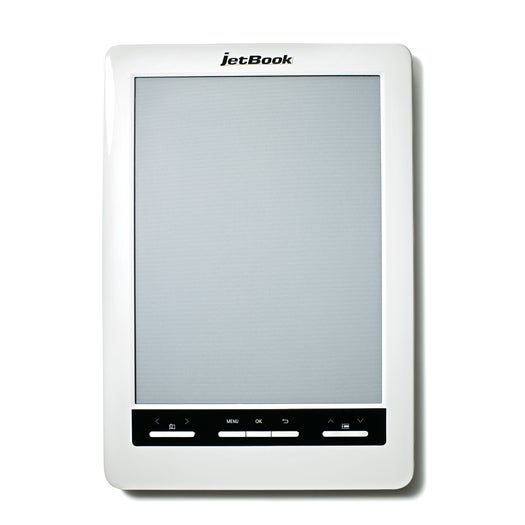E-Readers Finally Get a Splash of Color
E Ink, makers of the electrophoretic screens for the Kindle and Nook, are going color

We may earn revenue from the products available on this page and participate in affiliate programs. Learn more ›
LCD e-readers have one big advantage over e-paper ones: color. But what makes LCD screens so vibrant is also their downfall—the backlight necessary to illuminate pixels adds heft, slashes battery life, and can strain readers’ eyes. LCDs require a protective layer, typically glass, so they suffer from extreme glare in direct light. E Ink’s new Triton e-paper display, which came out in the U.S. this year on the Ectaco jetBook Color, produces 4,096 colors (the same palette as a newspaper) with ambient light alone.
As in E Ink’s monochrome screens (reviews: $80 Kindle, Kindle Touch, Kindle Fire), a matrix of millions of tiny capsules filled with charged black and white pigments form the basis of the Triton display. Those pigments move up and down in the capsules when current passes under them, and ambient light illuminates whichever pigments are on top. To create the color, engineers laid a 1.9-million-pixel film on top of that layer. Each pixel is divided into quarters of red, green, blue and white. The state of the capsules below determines which colors will reflect light; for example, if monochrome capsules under the red quadrant are white and the rest black, the pixel appears red. Full-color pages refresh in 800 milliseconds or less, and monochrome ones in 120 to 250 milliseconds. In the future, E Ink will produce a display with even faster refresh times, eventually allowing e-paper to play back video.
Screen Size: 9.7 inches
Readable formats: PDF, JPEG, RTF, GIF, TXT, PNG, EPUB
Battery Life: 10,000 page turns
Weight: 19 ounces
Price: $500

Hanvon C18
VIBRANT E-PAPER MADE OF GLASS
This year, two companies will launch e-readers with 5.7-inch Qualcomm Mirasol screens (a third launched one last year), which use shifting mechanical elements to reflect ambient light and display colors. Mirasol pixels are made from many microscopic glass elements. Each element consists of a reflective glass pane positioned microns above a movable reflective film. If a charge is applied to the glass, the film moves up to meet it, turning that element black. When the glass and the film are separated, the distance between them determines which light wavelengths will reflect back to the viewer—red, blue or green. The elements’ hues blend together to color each pixel.
Hanvon C18 China only; price not set